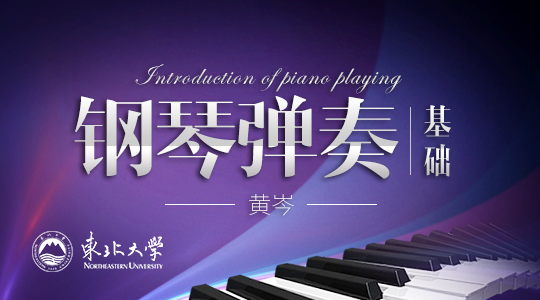
当前课程知识点:Culture and Tourism > Week 2: Mixed Heritage and Cultural Heritage Categories > 2.3 Special Heritage and Sustainable > 2.3.1 Physical remains of the history of technology and industry
返回《Culture and Tourism》慕课在线视频课程列表
返回《Culture and Tourism》慕课在线视频列表
在这一部分中,我主要讨论另一个新概念,工业遗产
工业遗产指的是
科技和工业历史的实物遗存
如制造业和采矿业遗址,以及电力和交通基础设施
另一个定义扩大了这一范围
以便该术语还包括用于与工业有关的社会活动的场所
例如住房、博物馆、教育或宗教礼堂
以及具有不同领域价值的其他结构
以突出工业遗产的跨学科性质
也有人认为,它包括所谓的
社会事实或社会和机构组织方面
以及构成态度特征
和价值体系的精神因素工业遗产地
因此,一些例子可以说明工业遗产
我想说的第一个是铁桥峡谷
铁桥峡谷是当今世界工业革命的标志
它包含了
18世纪促进这个工业区快速发展的所有进步因素
从矿山本身到铁路线
铁桥是世界上第一座用铁建造的桥梁
它对技术和建筑领域的发展产生了相当大的影响
这边在英国
所以这座建筑是以民用标准4和标准1为基础的建造的
它是人类创造天才的杰作,同样是普通人的杰作
这是第一座金属桥梁
根据标准2,阿拉伯山脊
对技术和建筑的发展产生了巨大的影响
所以有几张图片显示了遗址今天的样子
就像你在那里旅行就像时光旅行一样。很有趣。
这遗址也依据标准4
提供现代工业地区发展的
宝贵经验
采矿中心、转型工业、制造厂、工人宿舍
运输网络都保存得很好,足以构成
足以构成一个具有相当大教育潜力的协调整体
另一个例子是德温特乡村磨坊
英格兰中部的德温特山谷有一系列18世纪和19世纪的棉纺厂
,工业景观具有很高的历史和科技价值
现代工厂起源于克罗福德的工厂
理查德·阿克赖特的发明最初是在那里投入工业规模生产的
与这家工厂和其他工厂相关的工人住房仍然完好无损
说明了该地区的社会经济发展
这个标志也是基于几个棉花地区的标准2
德温特山谷见证了工厂制度的诞生
当时建造了新型建筑
以容纳18世纪末理查德·阿克赖特开发的纺织棉花新技术
标准4,在这个村子里
第一次有大规模的工业生产在农村景观
率先为工人和管理人员提供住房和其他设施
创造了第一个现代工业定居点
有一张画显示这家十八世纪和十九世纪工厂的样子
另一个例子是日本明治工业革命
钢铁,造船和煤矿
第三个例子是日本明治工业革命
所以基于准则二和准则四
明治在2015年进入了世界遗产名单
触发了一个激烈的讨论,我稍后会谈
该遗址由23个组成部分组成
主要位于日本西南部
它见证了这个国家从19世纪中叶
到20世纪初的快速工业化
通过发展钢铁工业、
造船业和煤炭开采
该遗址展示了19世纪中叶以来日本封建社会
从欧洲和美洲寻求技术转让的过程
以及这种技术是如何适应该国的需要和社会传统的
00:06:20,857 --> 00:06:26,297
该遗址证明了被认为是西方工业化
向非西方国家的第一次成功转移
它是基于标准2,和标准4
但是你知道,日本和中国之间有一个大问题
所以一些问题发生了
因为韩国,中国和日本之间的对此的争议问题
关键的问题是,日本只是强调了
该遗址对世界的重要贡献的问题
他们没有提到
因为这总是一个光明的一面,而不是黑暗的一面
因为他们利用了一些中国人和韩国人做劳工
这是一个非常黑暗的历史,和军事活动有关
而日本的提名中并没有提到这一点
这是韩中两国人民无法接受的
所以这张照片是这次提名的重要组成部分
三菱公司买下这块土地用于煤矿开采
然而,劳工说的是韩语
他们非法的使用了未成年工人
但是,在提名投票中没有提到
所以你需要重新思考
什么样的遗产对所有人来说都具有突出的普世价值
然而,就这次日本的提名而言
他们只展示了日本的光明面
却并没有提到中国人民、朝鲜人民的黑暗面
所以从我的角度来看,也许这不是提名的全部内容
如果您有兴趣阅读更多有关行业的信息
请参阅这些参考资料
所以在这一节中
我讨论了工业遗产的新概念,并给出了几个例子,谢谢您
-1.1 Introduction course outline and UNESCO World Heritage Program
--1.1.1 Introduction of culture and tourism course outline
--1.1.2 Introduction of UNESCO World Heritage Program(1)
--1.1.3 Introduction of UNESCO World Heritage Program(2)
-1.2 Cultural Heritage-1
--1.2.1 The meaning of culture heritage
--1.2.2 Criterion(i): masterpiece of human creative genius
--1.2.3 Criterion(ii): exhibit important interchange of human value
--1.2.4 Criterion(iii): bear a unique or at least exceptional testimony
--How can the public understand the importance of heritage?
-1.3 Cultural Heritage-2
--1.3.1 Criterion(iv): an outstanding example in human history
--1.3.2 Criterion(v): represent a culture or human interaction with environment
--1.3.3 Criterion(vi): associated with living traditions of outstanding universal significance
-1.4 Natural Heritage
--1.4.1 Natural heritage features, formations and criterions
--1.4.2 Cases studies of natural heritage
--Cultural landscape meanings: The case of West Lake, Hangzhou, China
--How to access heritage of your hometown?
-2.1 Mixed Culture and Natural Heritage
--2.1.1 Mixed heritage operational guidelines and cases (1)
--2.1.2 Mixed heritage operational guidelines and cases (2)
--2.1.3 Mixed heritage operational guidelines and cases(3)
-2.2 Authenticity, Integrity and Cultural Routes
--2.2.1 How to determine authenticity and integrity
--2.2.2 Heritage routes and heritage canals (1)
--2.2.3 Heritage routes and heritage canals (2)
--What do you think about cultural heritage categories?
-2.3 Special Heritage and Sustainable
--2.3.1 Physical remains of the history of technology and industry
--2.3.2 Transboundary Heritage, Serial Heritage, Serial/Transnational Heritage
--2.3.3 Intangible cultural heritage
--2.3.4 UNESCO World Heritage and Sustainable Tourism Programme
--Recovering the Memory of Ourselves for the Sustainable Cites
--Week 2 quiz
--What do you think about cultural heritage categories?
-3.1 The Australia’s Heritage System and Sydney Opera House
--3.1.1 The Australian Heritage System
--3.1.2 Case Study: The Sydney Opera House
-3.2 Role of the ISCCL and Cultural Landscape (1)
--3.2.2 Uluru-Kata Tjuta National Park
--3.2.3 Honghe Hani Rice Terraces
-3.3 Role of the ISCCL and Cultural Landscape (2)
--3.3.1 West Lake cultural landscape (1)
--3.3.2 West Lake cultural landscape (2)
-3.4 Rural Landscapes as Heritage
--3.4.1 ISCCL Principles Concerning Rural Landscapes as Heritage
-3.5 Case Study: Mongolian Altai
--3.5.1 Nature Culture Integration & the Mongolian Altai(1)
--3.5.2 Nature Culture Integration & the Mongolian Altai(2)
--Week 3 quiz
--Discussion: What do you think is the role of ISCCL?
-4.1 Introduction of the Meaning of 'landscape’
--4.1.1 Brief introduction of landscape and culture
--4.1.2 The conceptual framework of cultural landscape
-4.2 Landscape Values
--4.2.1 The word “landscape” itself and differences in Western, Eastern
--4.2.2 Cultural significance for heritage source
--Discussion: What do you think the cultural landscape attracts you?
-4.3 Reading the Landscape: Identification and Assessment
--4.3.1 Planning model for heritage conservation management policy
--4.3.2 Cultural landscape resources evaluation steps
--Article: Cultural mapping: Intangible values and engaging with communities with some reference to As
-4.4 Case Study: Wingecarribee Historic Landscape
--4.4.1 Case study:Wingecarribee historic landscape study(1)
--4.4.2 Case study:Wingecarribee historic landscape study(2)
--Week 4 quiz
--Discussion: What should we do to strengthen the protection of cultural landscape?
-5.1 Indigenous Tourism
--5.1.1 Indigenous tourism background
--5.1.2 World heritage and indigenous peoples
--5.1.3 Tourism issues at Canadian indigenous world heritage sites
--Discussion: What challenges indigenous World Heritage faces?
--Article: State conceptions of indigenous tourism in Chile
-5.2 Case Study and Conclusion: Great Expectations for Tourism
--5.2.1 Case study Pimachiowin Aki
--5.2.2 Conclusions:Great Expectations for Tourism
--Disussion: Do you have any experience of indigenous tourism?
--Week 5 quiz
-6.1 The Definition of Heritage in Heritage Performance Study
--6.1.1 The definition of heritage in heritage performance study
--6.1.2 Heritage performance and meaning making
--6.1.3 Two key issues emerging from qualitative study
-6.2 Heritage Performance - Evidence from Australia, England and USA
--6.2.1 Heritage performance - reinforcement
--6.2.2 Heritage Performance - inter-generational communication and social values
--6.2.3 Heritage performance - recognition and respect
--6.2.4 Heritage performance - education
--Article:Theorizing museum and heritage visiting
-6.3 The Conclusion of Heritage Performance
--6.3 The conclusion of heritage performance
--Week 6 quiz
--Discussion: What kinds of heritage performances have you learned in this week?



